Private house facade design
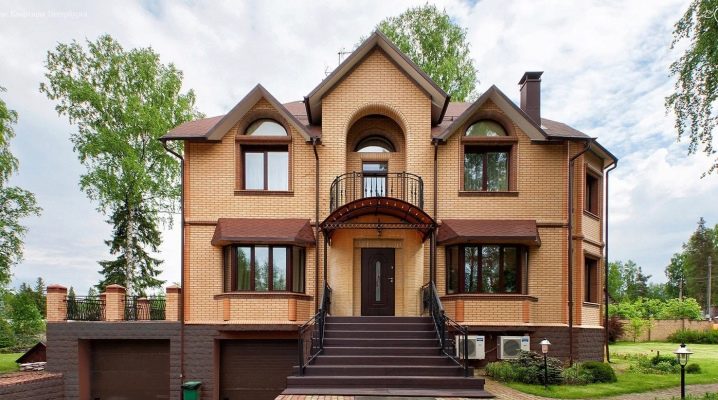
The design of the facade of a private house is something that you need to decide on before starting the construction of the building. Many factors influence the decision on the style of the exterior design. This article will discuss the features of the choice of facade design, its style, as well as materials for the correct decoration.
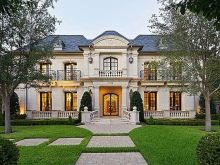
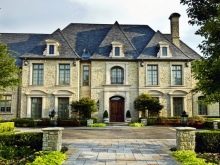

Features of facade design
Regardless of which building facade you need to decorate: a country brick house or a cottage within the city, a country wooden or frame house with an attic - there are common features that determine the choice of facade style that must be taken into account.
Design defines:
- the climate of the region;
- building and cladding material;
- the form of the building;
- stylistic directions of neighboring houses.
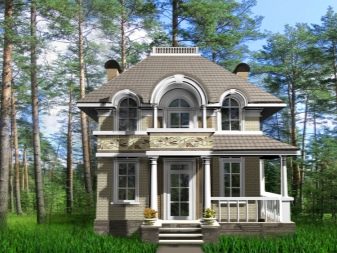

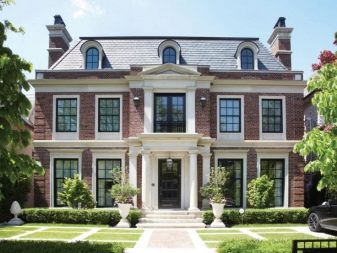
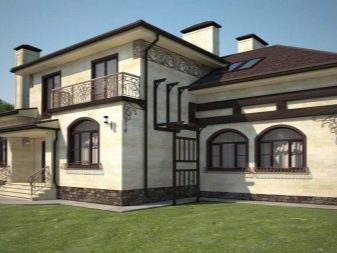
Climate influences the choice of materials for construction and facade cladding, which, like the shape, set the tone for the design.
As for the last point, it is your desire not to stand out from the general picture of the residential area, or, on the contrary, to stand out.
The area and number of storeys practically do not affect the design, the difference will be in the spent budget: it is clear that the construction of a one-story house will take less material and money than for a two-story house.
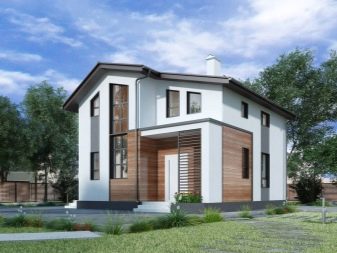
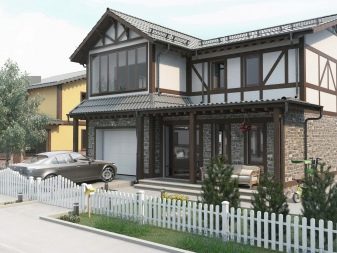
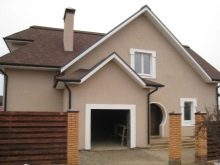
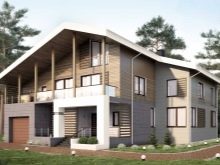
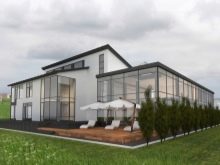
Materials (edit)
You need to approach work on the facade of your house not only from a creative side, but also from a practical one. The cladding material matters, and its choice should be based not only on the budget, but also on strength and environmental friendliness. The assortment is great, but we will consider the most popular cladding materials.
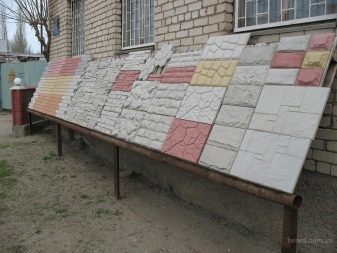
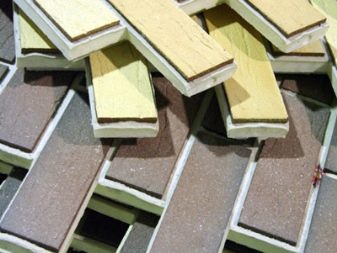
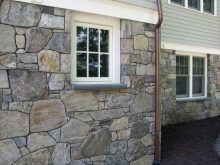
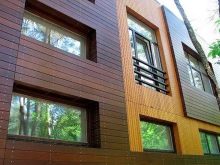
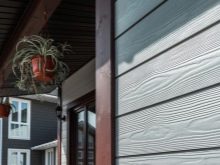
Brick is the most demanded and quite durable material. There is a range of colors on the market from light yellow and red to dark brown shades. The cladding from a combination of different colors looks very nice. Masonry takes place at the stage of wall construction.
When buying, you should rely on the following indicators:
- Resistance to destruction up to 100 freeze-thaw cycles.
- Withstanding loads up to 250 kg per 1 sq. cm.
- Moisture absorption is not more than 13%.
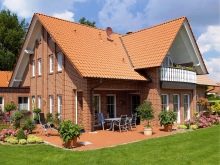

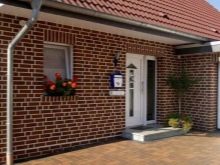
Facade plaster - it can be mineral, silicone, acrylic, silicate. Various colors. Quite an acceptable price range. Corrosion-resistant if an antiseptic is added to the mixture. The plaster version of the cladding is especially good for buildings in the Mediterranean and Provence styles.
Siding is a relatively new facing material that has won over with its availability and a wide range of colors. Easy to install. There are wooden, basement and vinyl. Wooden is the most environmentally friendly and beautiful option, but not the cheapest, in which case it is replaced with an ordinary wooden clapboard.
If you decide to do siding cladding, then choose light shades, as it quickly fade in the sun.
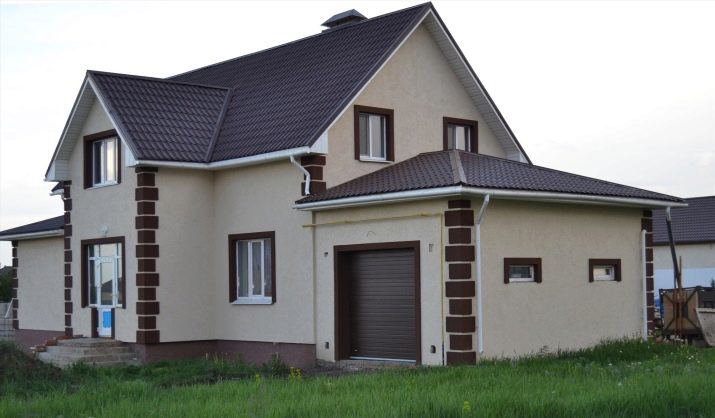
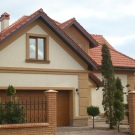


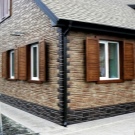
Stone or tiles are natural materials, expensive but environmentally friendly. The tiles are made from shell rock, limestone, dolomite and sandstone. That is why the material has natural shades - gray, brown, yellow, light and dark options. The tile is frost-resistant and does not deform.
Natural stone is a durable but expensive option that is often replaced with artificial stone. Moreover, it is much easier to lay it, and the color spectrum is wider.
But the design doesn't end with the cladding.
There are decorative elements to decorate the facade of the house:
- rust;
- cornice;
- Column;
- arch;
- socket;
- panel;
- platbands;
- pattern.
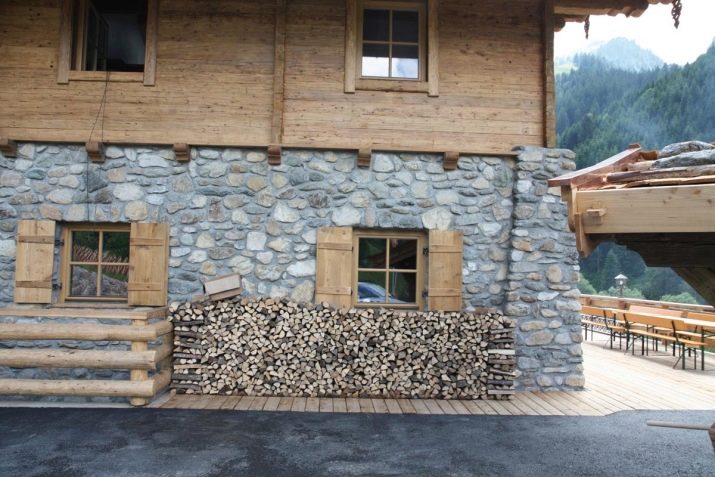

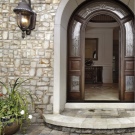
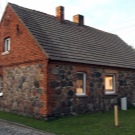
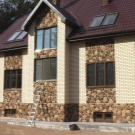
These stucco elements are usually made of the following materials:
- Gypsum - all castles and palaces are decorated with plaster moldings, but nowadays they try not to use this material. There are several reasons for this - high cost, poor weather resistance and heavy weight.
- Polymer concrete - due to attempts to improve the properties of gypsum, this material was produced. Its advantages are moisture resistance, low cost and significant ease of installation.

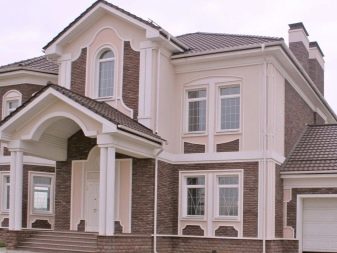
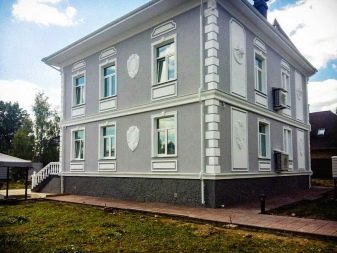
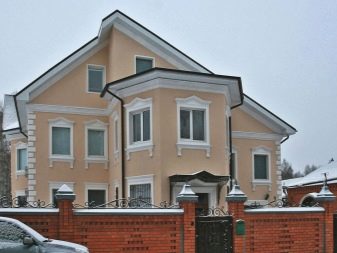
- Expanded polystyrene - Styrofoam, easy to install, but the material is very fragile. Its service life does not exceed 8 years, but it is increased by coating with acrylic, then the operating time can last up to 15 years. Styrofoam decor is the cheapest way, but not the most reliable.
- Polyurethane foam - more expensive than other materials, but lasts up to 30 years. Resistant to humidity and temperature differences. Does not crumble or crack. Polyurethane stucco molding should only be tinted once every ten years.
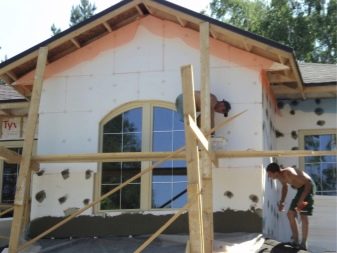
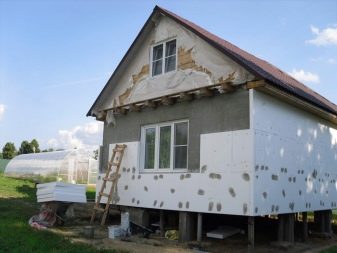
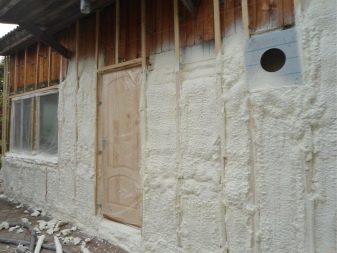

- Glass composite - durable, lightweight and elastic. Corrosion-resistant material, not amenable to deformation, resistant to climatic conditions. Has a wide range of design solutions.
There are also such creative enthusiasts who know how to decorate the facade of a painted house, even with plastic bottles or mosaics made of multi-colored glass. Painting is one of the cheapest methods, completely self-sufficient, not requiring additional decor in some stylistic directions.
You can find private houses decorated with wood or wood paneling, concrete block buildings are often decorated with imitation of timber.
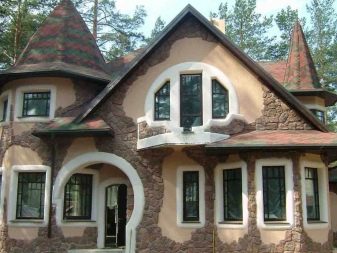
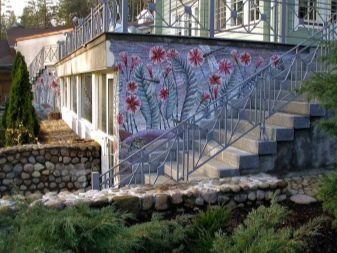
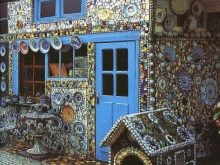
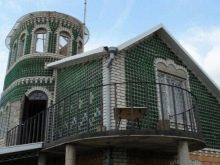
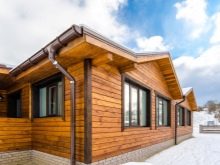
Color solutions
Any facing material has its own color. The most popular options for private houses are red, yellow, white, green, and others. But the choice of color for your home also determines the area in which it is located.
For houses located within the city, bright saturated colors are chosen.
The houses, surrounded by lush vegetation, located in a forested area, are painted in warm pastel colors to emphasize the natural landscape.
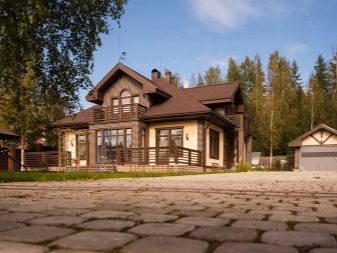
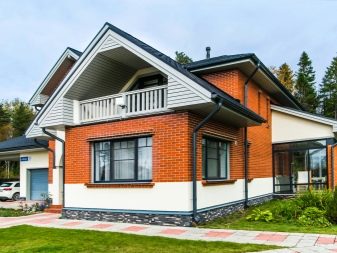
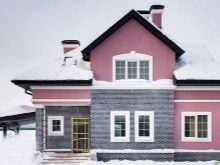
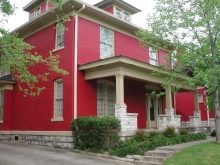
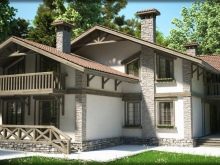
Colors have different properties and can affect the psyche. Therefore, it is worthwhile to approach the choice more competently so that your own home does not become an annoying object. If you gravitate towards saturated bright colors, then add them accentuated. Cornices painted in your favorite red or green, or the bright roof and doors of a white house.
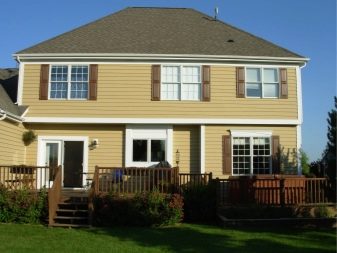
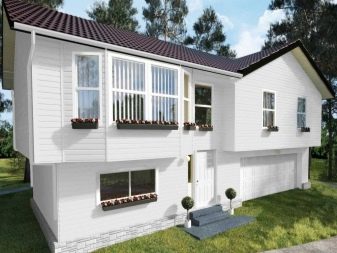
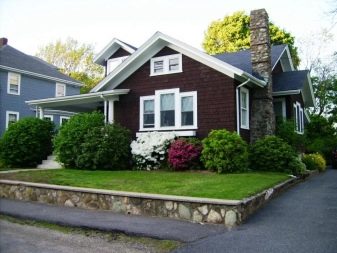
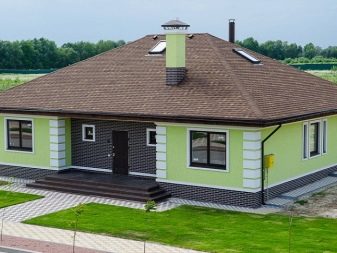
Here are some practical tips to heed:
- If there is a financial opportunity, then visualize your home, this is possible thanks to a special program. To do this, contact a specialist.
- In the absence of extra funds, do not rush to buy material for the whole house. In the store, select a few of your favorite color options and try them out with emphasis on nature, so you will understand how the color will look in day and evening lighting. How will it fit on the texture of the facade.
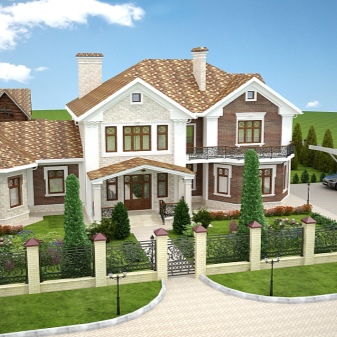
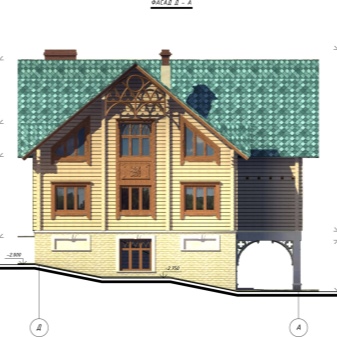
Determining the styling
Consider the most popular stylistic architectural trends in the construction of private houses.
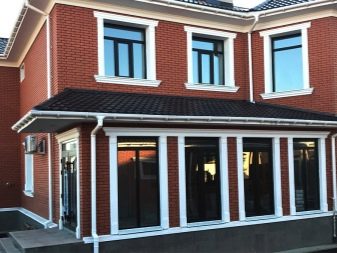
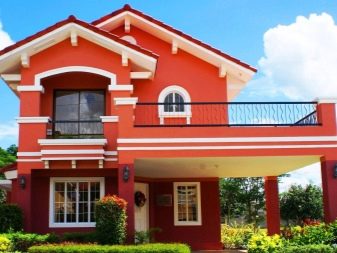
Modern style
It was born thanks to the combination of many - modern, hi-tech, country, classical, absorbing their best features.
The modern exterior features:
- Straight geometry, clear, simple lines.
- Ample building area.
- Panoramic windows, maximum glazing of the facade to achieve natural light.
- Restraint in decorative elements.
- The use of eco-materials.
- Combination of finishing materials.
A modern house harmoniously combines all these features. There are no clear rules in the use of materials for finishing the facade; you can combine several options at once.
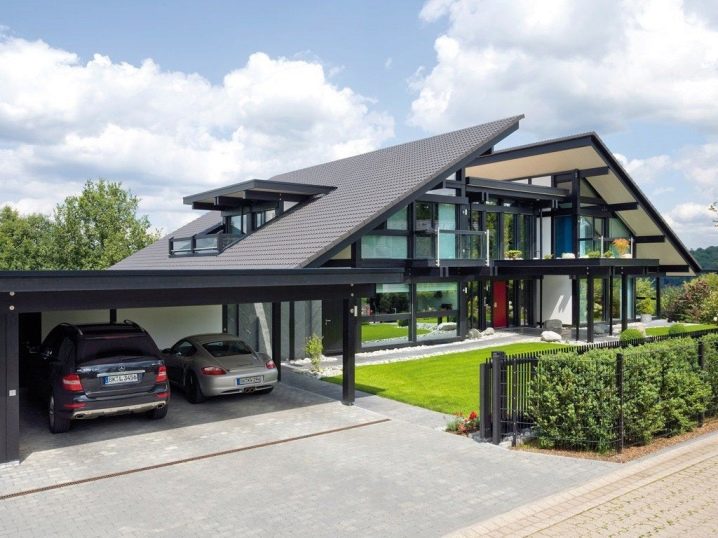
Country
These include French Provence, Spanish hacienda, Russian and English rustic styles, and American ranches.
They have common features:
- Decoration of both the exterior and interior of the house with only natural materials - wood, stone, ceramics, tiles.
- Only pastel shades are used to paint the facade, white matte walls look beautiful. They are allowed to be stained in a contrasting color of decorative elements, but it still should not be bright.
- The windows are small, sometimes there are shutters, window sills and platbands.
- Massive wooden doors.
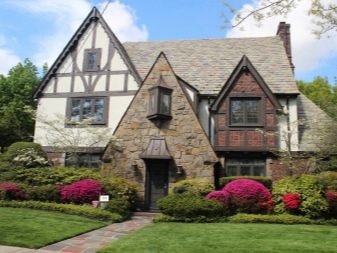
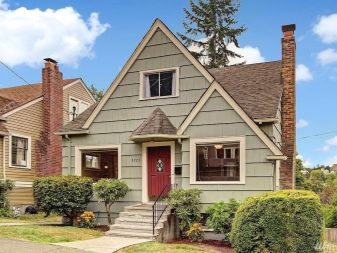
Exterior country-style decoration can be in the manner of houses in the English rustic style - wooden lathing of a white matte facade with wooden platbands, windows and doors.
In French Provence, the facade is faced with natural stone, the roof is covered with stone tiles, the windows are decorated with carved wooden trellises and flowers in pots.
A brighter version is with a reference to the Latin direction. In this case, the walls are finished with multi-colored tiles, and the roof is covered with clay tiles. Windows with wooden shutters and trims.
All these options will be good for houses in the countryside, country and country cottages.
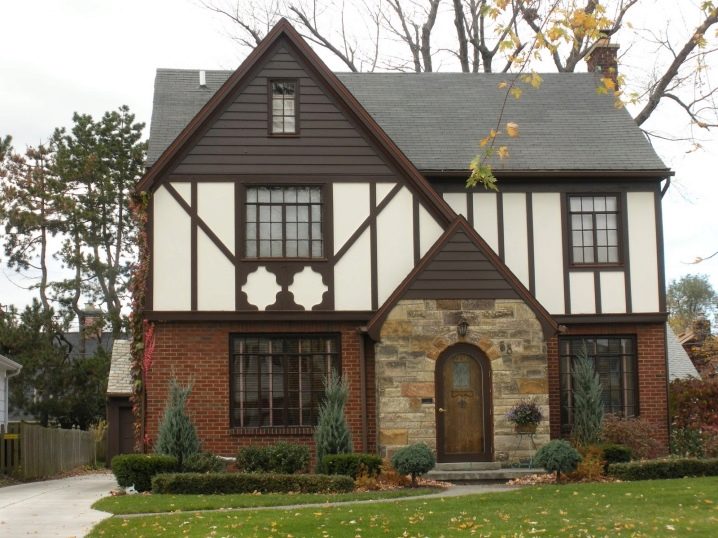
Baroque
Baroque architecture is truly a chic sight. Flowing shapes, pomp, opulence and luxury reflect this style.
Anyone will recognize the baroque, but we will still consider its features:
- openwork stucco molding;
- gilding;
- complex shape of the facade;
- thread;
- columns.
The exterior of this house should be luxurious, reflecting the status and position of the owners. The facade is decorated not only with gilded figured stucco moldings and carvings, but also with columns and domes. Huge windows and balconies are decorated with curly cornices, patterns and stucco moldings. The house has a large entrance hall with a wide staircase decorated with plaster statues. And the building itself must be very massive.
This is the style of palaces, and therefore it will not work for small cottages.

Romantic style
The progenitor of the romantic style was the French Gothic of the 12th century. And today these features are traced on the facades of buildings in this style.
Distinctive features:
- forged decor elements;
- stucco molding;
- columns;
- multilevel facade;
- lancet towers;
- French and arched windows;
- rusty.
Such a house is tiled with natural stone tiles, but the modern approach also allows an artificial one. The roof is covered with slate tiles. Windows and balconies are decorated with wrought iron bars, and the corners of the facade are decorated with rustic patterns.
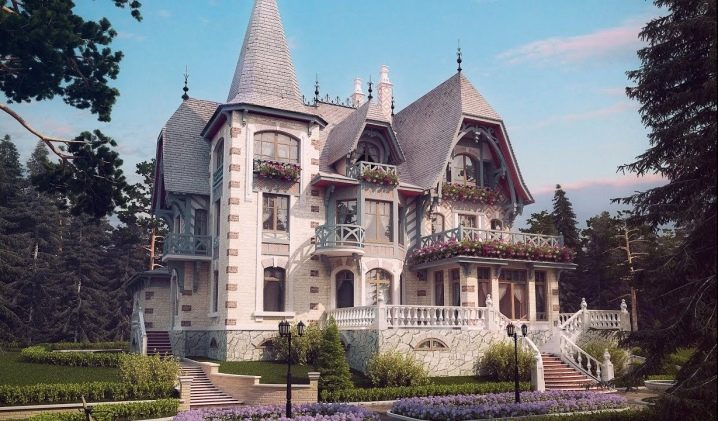
Byzantine style
The style arose with the birth of the Byzantine Empire in 395. And it combines the best architectural techniques of the Roman Empire and Greece, with a considerable influence of oriental culture - a gravitation towards luxury and decoration. In Russia, this is a favorite and even native architectural direction, it is worth looking only at our churches and cathedrals. Byzantine culture strongly influenced the Russian one.
Distinctive features:
- Facing with brick or stone.
- Column arcades with figured capitals.
- Cross-domed facade.
- Lined vertical narrow windows with rounded cornices.
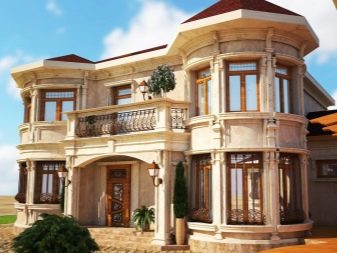
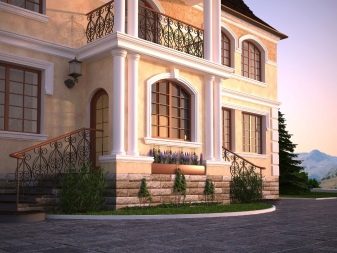
A house in this style is faced with dark or light bricks, the structure itself has asymmetrical shapes - straight lines of the lower part and a round dome on top. The wide driveway is decorated with mosaics. Facade painting is encouraged.
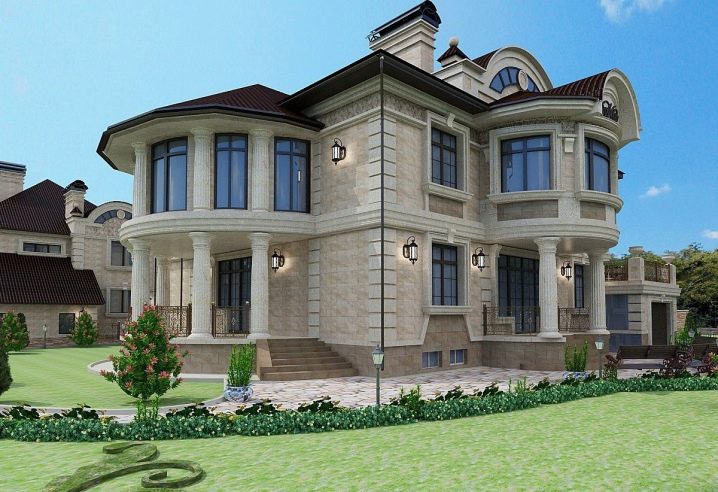
High tech
A relatively young architectural style, the first buildings in this style were erected in 1980-1990.
Distinctive features:
- Clear geometry.
- Engineering constructions instead of decor.
- Large staircases that extend outside the house.
- Wide application of glass and panoramic windows.
- Widespread use of metal structures.
All home decoration in this style is reduced to glazing, the use of aluminum structures. There are large panoramic windows and glass doors. And outside the house is decorated with a trimmed green lawn.
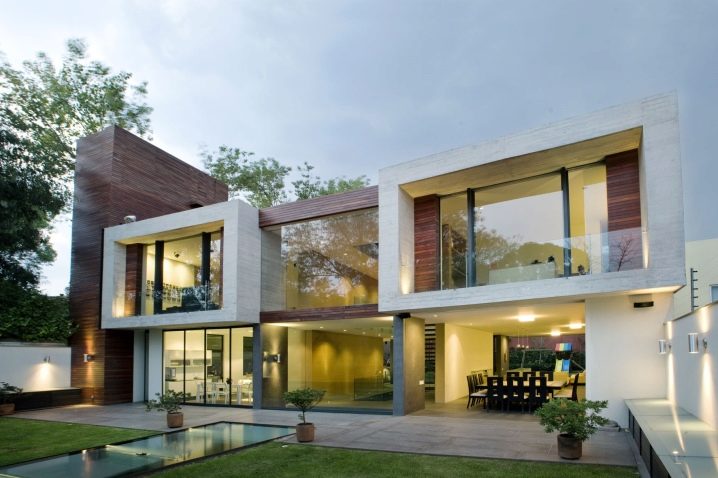
Alpine chalet
Initially, these houses were built for Alpine shepherds, but such a cozy structure is well suited for a village and a village, especially for a forest area.
The style is built on the concept of three levels:
- The lower level is a basement facade made of natural stone.
- The upper level is timber, mainly log cabins.
- Gable roof with wide ledges.
An alpine house is built on these three components, sometimes a wooden crate is used as a decor, then it looks more like a German chalet. Open balconies and wood-carved verandas are also added.
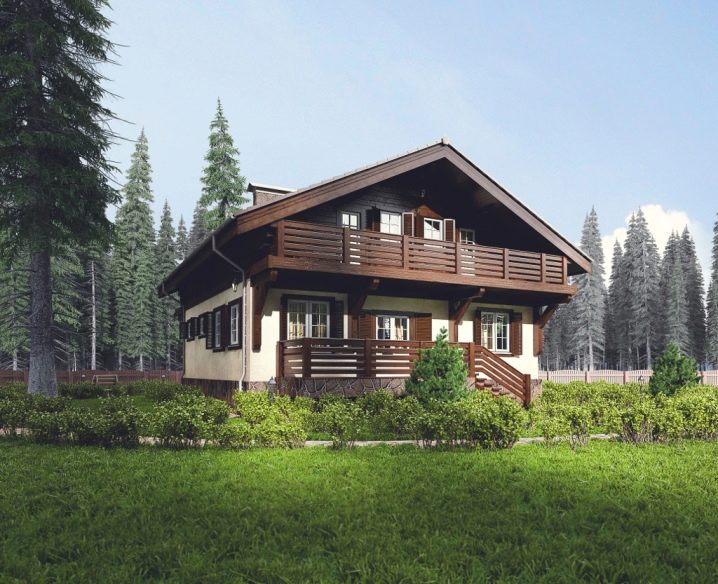
American style
A follower of the European style, but with its own distinctive features:
- Facing with natural stone, light plaster or brick.
- Terraces with a canopy supported by columns serve as decoration.
- A characteristic feature is a plurality of roofs or a roof that unites different functional areas (terrace, garage).
This style is so popular in our country that you can find it in any cottage village. You will recognize these low-rise houses by the spacious terrace that encompasses the entire front of the house. Large windows, sometimes with shutters. And the garage attached to the house. The decor is minimal, the cladding material and the terrace are the decoration.
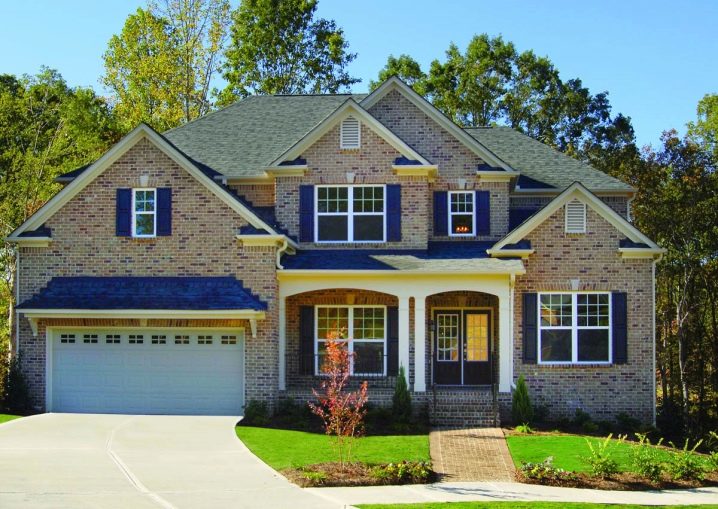
East style
This is the culture and traditions of the eastern world. The architecture of the rich and luxurious Arab countries, the strict and laconic countries of China and Japan.
Distinctive features:
- Asymmetry of the forms of the structure and its proportions.
- Decorated with arches, curved roof slopes and domes. Stucco molding, the ornament of which reflects the national culture and religion.
- The cladding is made of natural materials - stone, wood, whitewash.
- The presence of a courtyard that frames the facade of the house.
Guided by these features, you will plunge into the atmosphere of the East.

Scandinavian style
The style was influenced by the terrain and climate of the Scandinavian countries. Harsh northern climate, beautiful nature, sea and winds, short sunny day.
Distinctive features:
- The house is built only from a log house, sheathed with wooden siding or clapboard.
- If they paint the facade, then only in light shades, or simply tint the wood.
- There is almost no decor, it is allowed to paint windows or doors in a contrasting color.
Such a house should be as simple and reliable as possible, it should be in harmony with nature, therefore the Scandinavians choose only natural materials for both cladding and interior decoration.
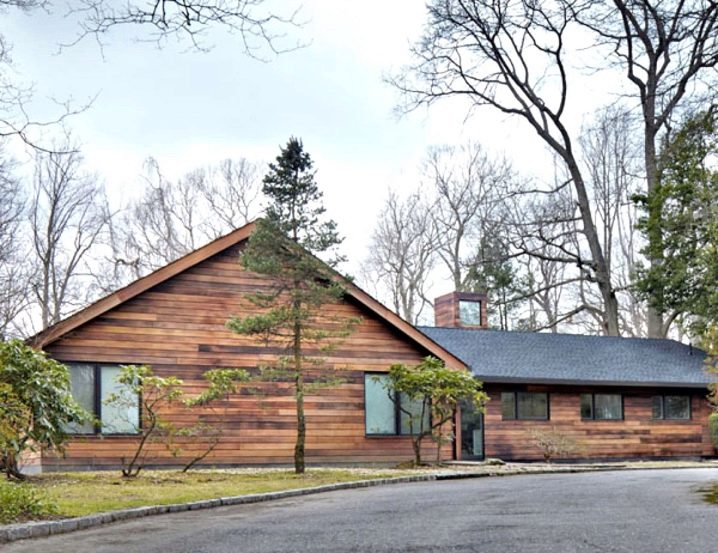
Beautiful examples and ideas
You can pick up interesting ideas for your projects from the following photo selection:
- Modern small Scandinavian style house. And the characteristic simple features, diluted only with panoramic glazing.
- Small country style cottage with stone cladding.
- Mansion in a romantic style in light colors, decorated with wrought iron bars under the windows.
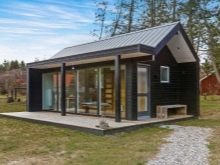
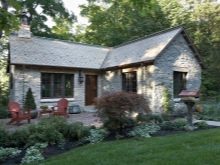
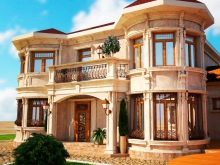
- Modern Baroque style: the facade of the house is decorated with rustic corners and columns supporting the protrusions of the round balconies.
- The Provence style mansion is tiled with stone and decorated with vibrant flowers.
- A laconic Japanese house with a pointed roof.
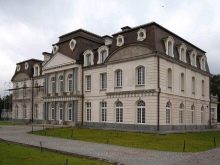
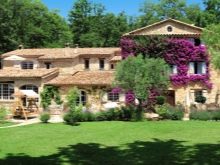
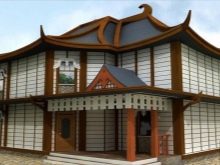
For information on how to choose the color of the facade of a private house without the help of a designer, see the next video.













The comment was sent successfully.